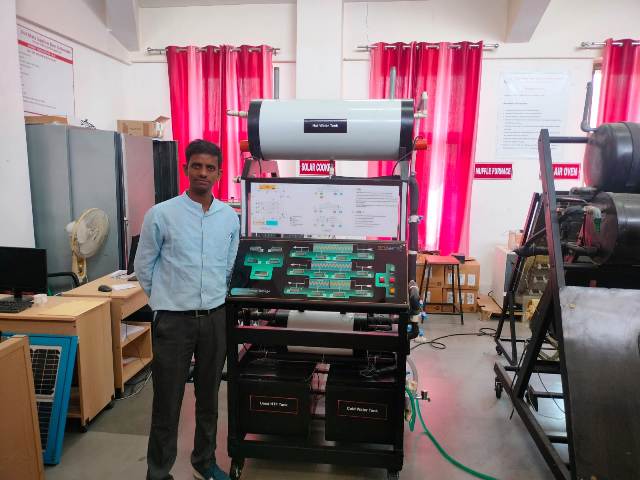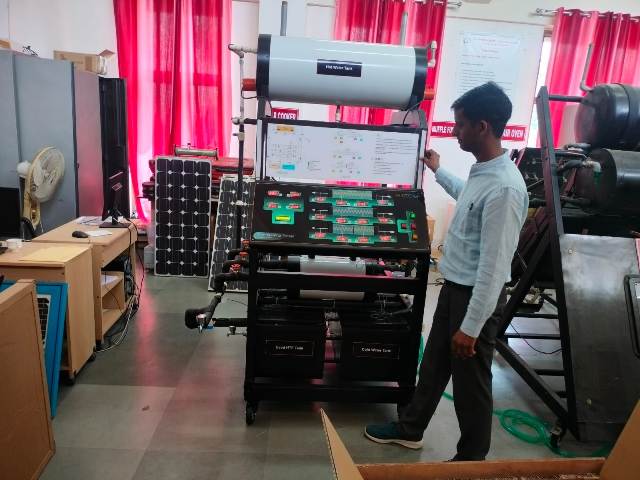The system has been designed to perform TES related experiment by using
phase changing materials (PCM). As there are several types of PCMs, the system
has been designed to perform experiment with at least two PCMs separately.
Provision has also been kept to examine the combine (known as cascading) effect
of two PCMs in thermal energy storage.
Stainless steel cylinders are there to contain the PCMs. To charge and
discharge (store and extraction of heat) the PCMs, spiral type heat exchangers
made of copper of appropriate dimensions are installed in the containers. The
PCMs and heat exchangers are meticulously arranged inside the S.S cylinders. In
order to block heat loss from the PCM, all the cylinders are insulated by
polyurethane (PUF) foam insulation.
To visualize the phase changing process another set of arrangement is
there in the system. In this set the heat exchanger-PCM duo are there inside a
transparent container made of acrylic and nylon. No insulation is there in this
set of arrangement.
Water is the heat transferring fluid (HTF) in the system. While hot
water gives heat to the PCM during charging, the cold water absorbed heat from
the same PCM during discharging. To supply water for different purposes, three
tanks are there in the system. For source of energy, special arrangement has
been made within the system. Besides the integrated arrangement, the system can
also be connected with flat plate solar collector or parabolic trough solar
collector for the source of energy.
Different
parts of the systems are connected with G.I pipes of ½ inch size. To direct the
heat transferring fluid as per requirement several gate valves are there in the
appropriate locations. To measure different variables such as temperature, flow
rate, etc., respective sensors are placed at the targeted points. There is a
control unit in the system where all meters and control buttons are
strategically arranged to display the reading from the respective sensors.


